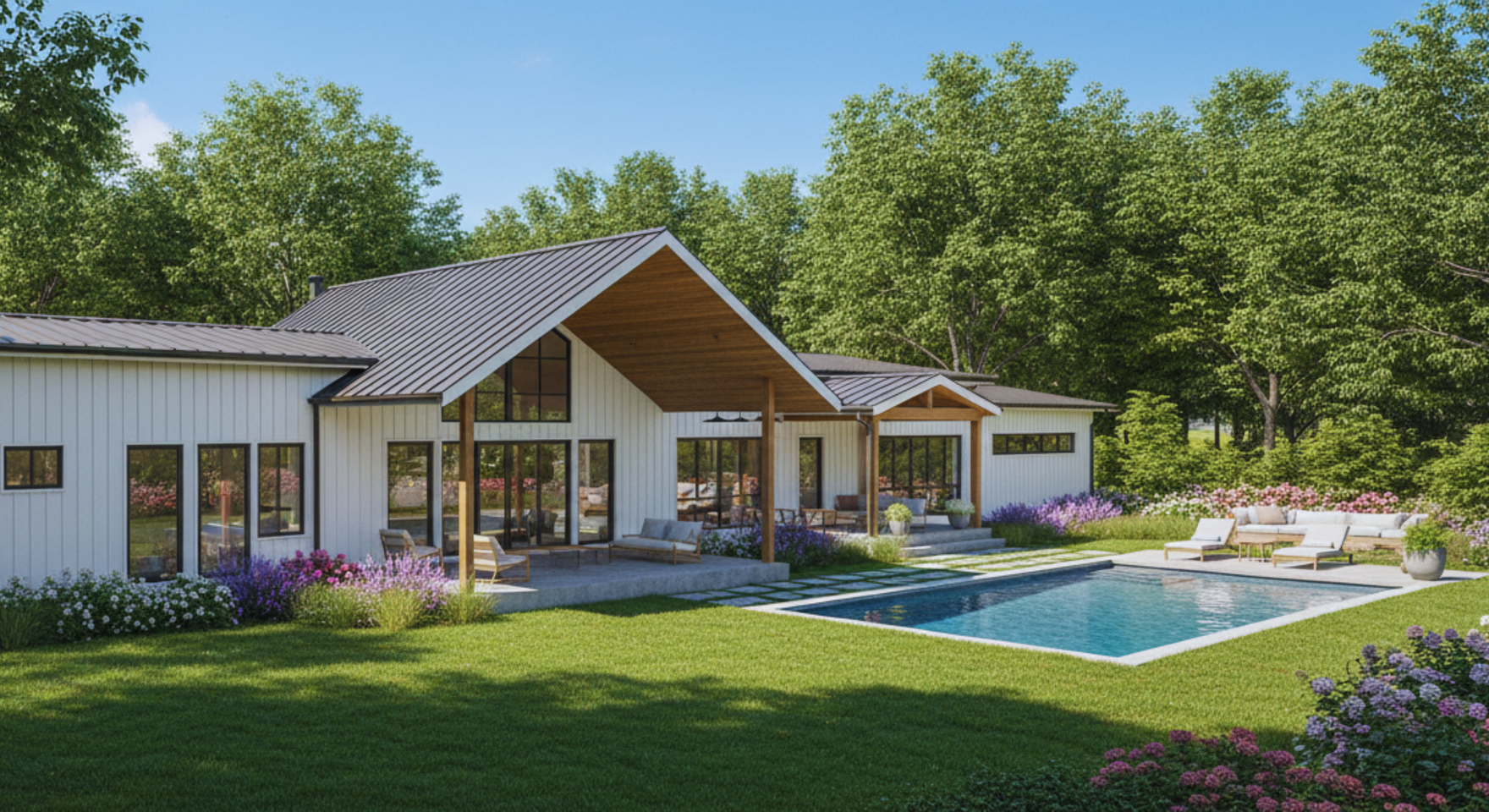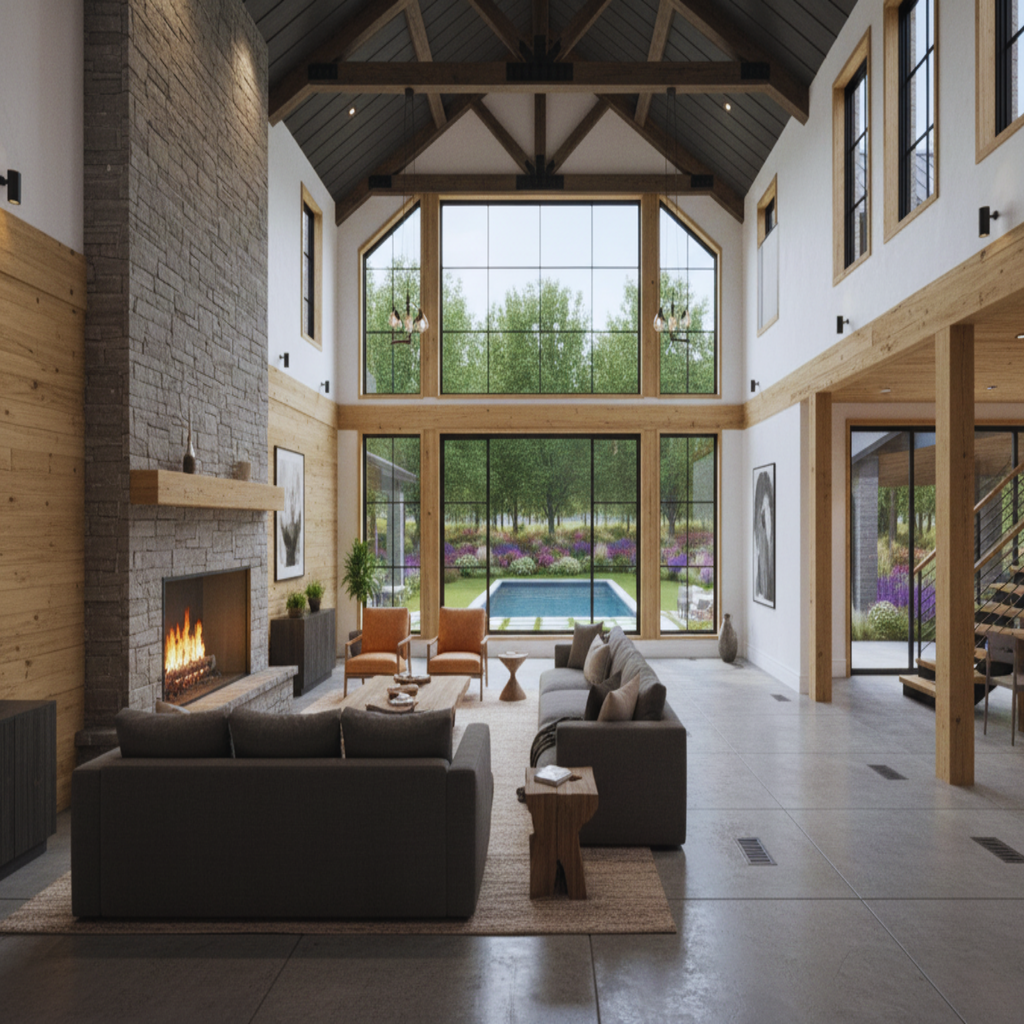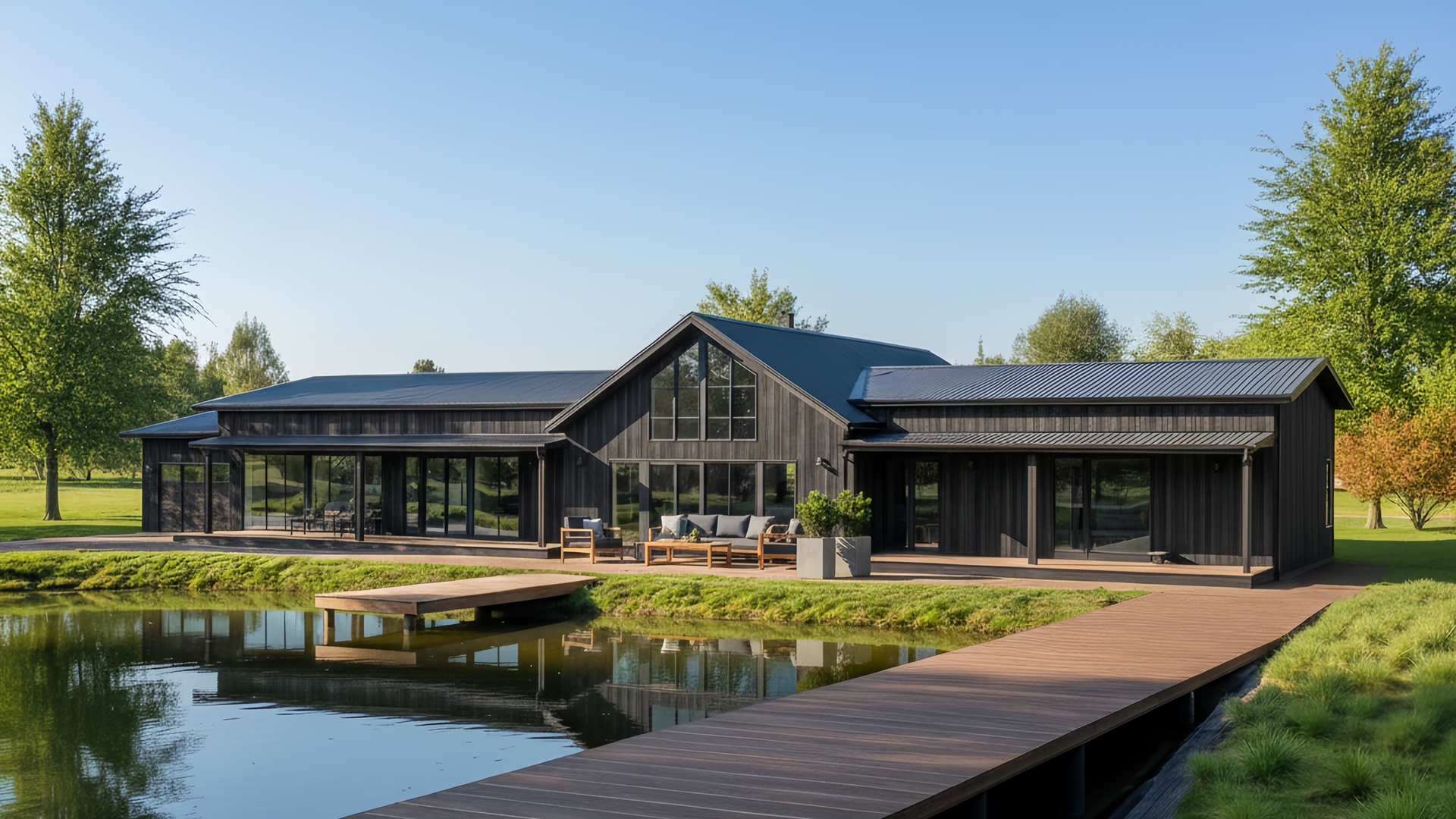A veteran housing developer believes there has been little industry innovation in Australia for 25 years, and his 'Barndominiums' are the answer.
Luke Fryer spent weeks in Texas, learning about US-style homes.
American-style homes could soon be built across Australia, under a radical new design plan unveiled by a start-up company on Friday. Luke Fryer, the founder of Longhorn, believes ranch-style homes that he spent weeks studying in Texas could be better suited to Australia’s climate and rugged countryside than traditional structures.
“We're going to design and build these things everywhere from Darwin to Launceston and over to Broome,” he told Yahoo News.
The company's steel-framed “Barndominiums” have high ceilings and rustic aesthetics, with large stone fireplaces, “luxury” finishes, and soaring eight to 12-metre high ceilings. Fryer compares them to something television viewers might have seen on the Kevin Costner cowboy drama series Yellowstone.
The 12 different styles have US-inspired names like the Oklahoma, the Wyoming, and the Minnesota. But Fryer believes their two-storey floor-to-ceiling windows are suited to looking out onto Australia's rugged ridges, mountains and valleys.
"I see a farmer on his four-wheeler ride past, and he might stop for 20 seconds and admire the view, and then he keeps on going. And I look at these spaces, I think, wow, what a beautiful place it would be to live. But in my view, there's no real product in Australia right now that can capitalise on that location," he said.
How much will they cost?
These sprawling houses are designed for rural and regional areas, and in most cases, the power supply, water storage, and sewage treatment will be completely off-grid. They’re expected to cost anywhere from $700,000 for a basic model, all the way up to $2.3 million for all the “bells and whistles”, which he predicts will be 10 per cent cheaper than most other homes. And they have a size range of 450 to 730 square meters.
How fast can they be constructed?
As the former general manager of Australia’s biggest home builder, Metricon, Fryer thinks the nation’s homes are “perfectly fine”. But one problem he argues the industry is lacking is embracing innovation, and in his view, the last great home innovation in Australia was the introduction of white Hampton’s style dwellings 25 years ago.
Looking back even further, he doesn’t think building methods have fundamentally changed in Australia since the 1980s. While over in Europe, many homes are prefabricated for quick construction, and in the US, ample availability of labour results in fast onsite builds.
In Texas, he saw homes being erected in 150 days, which he describes as “mindblowing”, because the same type of dwelling would take 10 to 11 months in Australia. Because of the local trade shortage, he doesn’t expect to be able to build at anything like the pace of Americans.
But he does anticipate a faster build time of around six months. And this could be achieved by having an on-site “Barndominium expert building team” to reduce lag times between one trade leaving and the next arriving, and ensure “consecutive building activity”.
Is Australia ready for more US culture?
While speaking with Yahoo News Australia, Fryer committed to using “sustainable” features, including recycled and FSC-approved timber. And the homes will be kept cool in summer and hot in winter through a combination of verandas, insulation and a ventilation system that’s traditionally been used in shopping centres and commercial buildings.
Many Australians struggle with US influences impinging on culture, from adding Americanisms like “sassy” and “awesome” to our language, or replacing the classic ute with massive “Yank tanks”, otherwise known as pickup trucks.
Fryer concedes the US and Australia are in very different places politically right now, but he thinks many aspects of the nation’s culture continue to be loved.
“Australia has a long history of taking its pop culture, fashion, and architectural cues from the States, and I think that will continue,” he said.
Read full Yahoo News article here: http://bit.ly/4pMCGG1






.png)

.png)





%201%20(1).svg)
%201.svg)
%20(1).png)
